 Read the peer reviews for this feature
Read the peer reviews for this feature
For over a century the railway station was the life-blood of every settlement that had one. Then they rather fell out of favour, certainly regionally. Today, stations in many of the world’s largest towns and cities are regaining a pivotal position in the way urban areas are being reconfigured for a future that cannot cope with (or accept) road-based transport solutions. Climate change, intolerable levels of pollution and a desire for more visually and environmentally attractive cities are driving change.
In Britain, these trends - albeit slower than many believe necessary - are combining with a series of crises to focus attention on railway estate, and its potential to alleviate them. Britain has a housing crisis, while air pollution in the UK is a “public health emergency”, according to a cross-party committee of MPs.
Combine these with the need for £1.8 billion of Network Rail asset sales announced in November 2015 by NR Chairman Sir Peter Hendy for the modernisation programme to continue, and a wider debate has been opened up about the use we make of railway land and stations.
There is clearly pressure from Government (and the Treasury in particular) for fast results, to reduce the call on the Exchequer to fund rail modernisation schemes and to slow the increase in NR debt, which currently stands at £38bn. This has led to an agreement between NR and the Homes and Communities Agency (HCA) to identify potential sites for development.
“The Government recognises the benefits of encouraging and facilitating development around stations,” says HCA Head of Land Ian Piper.
“At the heart of the National Planning and Policy Framework is the objective of reducing the need for travel and to develop around transport hubs. Over the last six months NR and HCA have been looking at the potential for housing sites in these locations. This hits several policy drivers: more homes on brownfield land; sustainable development; and improving the passenger experience at stations.
“We are working closely with local authorities to maximise a site’s potential, whichever of the three parties owns it. The HCA has plenty of experience in putting these framework deals in place. Land can be released by the more efficient use of surface car-parking - NR and train operating companies are looking at multi-decking solutions to intensify use of an area. We haven’t considered developing air rights over stations yet, but they are not ruled out, subject to regulatory acceptability.
“The other Government priority is to secure new starter homes, so we are looking at development opportunities that will incorporate them, although the mix of development must be appropriate for the site. City centre sites are increasingly attractive to young buyers, and help to revitalise city centres that have suffered from a decline in retailing.”
Just how realistic is the expectation that £1.8bn can be realised in short order?
It is understood that NR is focusing on three areas: freight land; arches; and passenger train maintenance depots.
The most obvious reaction to the sales strategy is that much of the family silver has already gone. In a single year (1966) the British Rail’s Estate Department put £24 million into BR’s coffers, largely derived from London property sales. The peak year for sales was 1983, on the back of the hotel disposals (reaching £71m). Equally, thousands of large and small schemes have resulted in goods yards being converted to car parks, sold to tenants, or redeveloped - from supermarkets at Hull Priory, Keighley and Windermere to office blocks at Birmingham Central Goods and Henley-on-Thames.
For many of the nationalised years, there was a tension between the short-term demands of Government and Treasury for quick sales and an awareness that this policy lost the railway not only a continuing source of income, but also the chance to benefit from rising capital values. The same holds true today.
LONG-TERM PARTNERSHIPS
Stephen Joseph, chief executive of the Campaign for Better Transport, believes that some schemes would be much more beneficial for the railway if they were treated as long-term partnerships: “Fire sales for immediate funds won’t generate as much benefit as long-term deals. Sales also increase the danger of ransom strips and need for compulsory powers. The draft alterations to the National Planning Policy Framework have put in a presumption for high-density development around stations and public transport hubs. That should carry weight, and make it easier to resist short-term development that would impede that.”
It seems perverse that at the very moment when planning is increasingly being seen as a means of achieving economic goals, rather than as ‘the enemy’ or an obstacle, anything should be done to prevent partnerships being formed that would allow the railway and/or local authorities to share with developers the benefits of state-built infrastructure.
Although there is a requirement for NR to satisfy the Office of Rail and Road that land being released is no longer needed for railway purposes, there are certain to be cases where a future use is not anticipated. There is no doubt that many of the fire sales carried out by British Rail Property Board (BRPB) at the behest of a Treasury impatient for easy money are deeply regretted. Quite apart from the lack of foresight in protecting the linear integrity of closed lines, the indecent haste of disposals was at the expense of long-term gains from the rising property market.
A 1985 Monopolies & Mergers Commission inquiry into property disposals criticised the arbitrary nature of the sales timetable that the Government had imposed. Constraints on BRPB prevented it emulating East Japan Railway (see page 34) in developing long-term joint ventures - a rare and very successful exception being the Broadgate development beside Liverpool Street station with Rosehaugh Stanhope.
Even today, planning permission is still being granted to developments that would reduce the chances of a railway re-opening, even where such proposals exist. The costs of rebuilding East West rail between Oxford and Cambridge will be much higher because sections of trackbed were built on, although one silver lining is that work to identify the optimum new route east of Milton Keynes is assessing the scope for housing developments adjacent to the railway. As a rule of thumb, between 3,000 and 4,000 houses are required to justify a new station without revenue subsidy.
Many other re-opening schemes hinge around housing developments, raising the prospect of creating new transport hubs and revenue from station developments. Reinstatement of the Stratford-upon-Avon to Honeybourne line is predicated on the construction of 5,900 new homes on two ex-military brownfield sites near Long Marston. One of the developers, CALA homes, has offered £17m towards the railway’s re-opening.
Then there is the need to expand stations to cope with rising numbers. Jonathan Bray, director of the Urban Transport Group, is concerned that “decisions might be taken that would later reduce capacity for station expansion or for bringing freight directly into cities”.
It was one thing selling railway land when it was widely thought that railways were on a downward trajectory - it’s quite another when it is expanding at rates unknown for a century, with every reason to believe that the trend will continue.
The first fruits of the NR/HCA collaborations were announced in April, for three sites: 2,500 homes and 100,000m2 of office space are earmarked for a ‘sustainable new community’ at York; a mix of offices, shops, restaurants, cinema, hotel and 49 homes at Taunton; and land around Swindon station has been identified for housing and commercial development.
Devolved bodies are also responding to the pressure, with Transport for London (TfL) planning to emulate the Metropolitan Railway in using land around its stations for homes. Before it became part of London Transport in 1933, Metropolitan Railway Country Estates Ltd had been closely involved with the development of 1,500 acres (and more loosely with another 1,500 acres). And rather than selling land, TfL has chosen 13 partners - including housebuilders Barratt, Berkeley, Taylor Wimpey and Redrow - with which to develop sites in joint ventures. Initially 75 sites covering 300 acres are being worked on, of which two-thirds are in Zones 1 and 2.
The first sites include a long-derelict depot site at Parsons Green, plans for 20 town houses on a strip of land close to fashionable Thurloe Square in South Kensington, and land around Southwark and Bermondsey stations that is earmarked for about 300 homes apiece, plus other locations under consideration at Harrow-on-the-Hill, Northwood and Kidbrooke.
At Bond Street flats are being built above the new Crossrail station. And even TfL’s Grade 1 listed headquarters building at St James’s Park (designed by Charles Holden) is being converted into 89 apartments. But by far the largest current development is Earl’s Court, where TfL owns the land around the exhibition centre. A partnership with Capco will entail 7,500 homes built on 77 acres.
The partnership approach has been welcomed by others. Peter Murray, chairman of New London Architecture, believes that “if TfL adopts a long-term view and does not sell off the family silver, it could be a boon for the whole of London, not just for transport”.
New sites are also being developed. In May TfL was given planning permission for a new development above and around Nine Elms station on the Northern Line extension. This development entails the delivery of 332 new homes. It will also provide 5,332m2 of new office space, 902m2 of retail and leisure space, as well as a new public square, pedestrian and cycle connections, cycle parking and disabled car parking spaces. It will improve local facilities and provide new revenue for TfL to reinvest.
TfL’s wider plan is to generate £3.4bn in non-fare revenue by 2023, to reinvest in the transport network through its property development framework. Thirteen appointed property development companies will bid for work on around 50 TfL sites across London for the delivery of thousands of homes, offices and retail spaces.
But how attractive are these schemes to developers? Peter Frost, managing director of Kilbride Holdings, is behind the development of 750 homes at Tavistock and the proposed reinstatement of passenger services between the Devon town and Plymouth. He believes there is a considerable appetite from developers for partnership schemes, and has found councils very supportive.
He explains: “We took the Tavistock scheme through the local plan ourselves, got it allocated with the support of town and county councils, secured land rights, and brought in Bovis Homes for the residential planning application while we carried on with helping the county council with the rail development plan.
“We did that because we thought Bovis would be quicker and get a better consent than we could. In retrospect we might have been better keeping control over the site for as long as we could. That way we would have had much more influence over the quality of the development and had control over the process. Long-term infrastructure projects take time, and the longer one can keep control the better. The more parties involved, the longer it takes. You need to get all rail agreements tied down and then get house builders in.
“It will be the level of detail that determines whether NR’s idea works or not. Sorting out the release of assets, the funding and the vehicle for doing it is just the start. Central government will need to give a clear steer with timetables, and local government will welcome the DfT’s expertise in resolving how stations fit into the planning system and the franchising process - who owns and controls the stations.
“We need a clear process and legal and financial structure for everyone to follow. The length of franchises needs taking into consideration, as developers need longer periods to realise the value of assets. A certain level of control has to be given up, otherwise it will be hard to achieve that £1.8bn.”
Perhaps the most promising area is train maintenance depots, although there is no possibility of quick wins. There is little justification for having such depots on urban land that could be redeveloped, apart from proximity to a workforce. Provided there are suitably located booking-on points and sufficient overnight stabling and cleaning facilities near stations where trains start their journey, the maintenance can be done on low-value land. Bombardier chose rural Barton-under-Needwood for its Central Rivers TMD to maintain Voyagers, rather than an urban site.
Moreover, as many trains are lengthened to address rising demand, or as new fleets are introduced, the current facilities are inadequate and will require significant investment to allow a whole train to be lifted, for example. Better to plan a bespoke depot on cheaper land and realise the value of the urban site.
One of the cornerstones behind the desire of regions for devolved powers is the opportunity to improve the use of stations for both passengers and the community as a whole.
Transport for Greater Manchester (TfGM) is worried that “divestment of non-core assets could impact on plans for development and devolution”. It adds: “TfGM will be seeking assurances from NR that land and property sold will not impact on our ability to future-proof transport expansion or impact on the commercial viability of our devolution aspirations. This is particularly relevant for Rail Stations devolution where future income and development opportunities could be constrained.”
Bray believes there is “a strong case for expanding the role of devolved authorities, which are well placed to link opportunities for station development with wider objectives and funding streams. Some very high-quality work has been done in PTE areas with good attention to detail, such as the attractively designed Rochdale Interchange between Metrolink and local buses. PTEs recognise the importance of attractive transport hubs as part of what a town centre should be like. It’s important to get the balance between developing and safeguarding sites for rail use.”
Train operators are also taking a much more active interest in enhancing the wider benefits of stations. ScotRail, says Bray, sees “an opportunity for fewer stations to be cold, impersonal and fortified, and more of a gateway and opportunity for the sometimes struggling towns they serve. £1m a year of funding for a more ambitious, outward-facing community rail programme, as well as more combined retail/ticket sales points at smaller stations, should also help. As should plugging the railways into the Scottish Towns Partnership, which (as the name suggests) is there to network and assist their revival and prosperity.”
Hasty disposal of land adjoining stations may limit or jeopardise development schemes. Peter Madden, chief executive of Future Cities Catapult, foresees a time when the ubiquity of tickets on mobile phones or other devices will allow multiple access points at stations. The benefits of re-orientating stations with new entrances can already be seen at Leeds, Newcastle and York.
Another concern must be over the control and selection of retail outlets at stations. There has been a deliberate policy of improving the quality of retailing at new developments such as St Pancras and King’s Cross in London and at Birmingham New Street - more Paul and Peyton & Byrne than Burger King and Pizza Hut. As a consequence, these stations have become shopping destinations in their own right, as well as enhancing the attraction of travelling by train. Bray cautions against stations becoming bland and “chainy”, and believes more should be done to make them reflect local enterprise and businesses.
The revival of pressure to identify land for non-rail uses is ringing alarm bells in the rail freight industry. Lee Armstrong, at GB Railfreight, is concerned that: “Network Rail is trying to sell off large chunks of land. What were strategic freight sites are potentially going to be sold.”
It’s not only suitable sites for rail freight terminals that are at risk, there is also the need for space to stable trains around cities during the six hours a day (three in the morning and three in the evening) when freight trains cannot move because of rush-hour passenger trains.
Three asset categories within the Freight Property Portfolio are being assessed by NR. The first is strategic freight sites. Rail Freight Group Executive Director Maggie Simpson concedes that some are not very strategic and are surplus to requirements - while most remain necessary, some are low value and could be sold for housing. However, there are only five strategic rail sites in greater London, which is hardly sufficient for the growing construction market, let alone other categories.
Other sites, such as the well-equipped DB Cargo site at Willesden, have been affected by the construction needs of HS2.
The second category is operational terminals and sidings, usually on 125-year leases at peppercorn rent. Within those are some sites that could be used better and reorganised to release land on the periphery, whereas others are absolutely critical. For the former, a sophisticated approach is needed to achieve better use of the site, which would probably require some investment before the value of the disposable land could be realised. An example would be the large area of Tyne Yard.
The final category is the 105 sites bought by NR in 2014 from DB Schenker, Freightliner and GBRf, under Project Mountfield. Nearly all are tenanted for bespoke commodities such as aggregates, scrap and petrochemicals, rather than large intermodal sites. They produce a rental income of just under £20m per annum, and the original idea of NR taking them on was to increase that income by improving them. However, funds for that dried up.
Urban sites for construction materials are particularly important, to minimise lorry miles and to reduce the risk of collision with pedestrians and cyclists. Aggregate and cement companies have never been more active in investing in new terminals and wagons to meet sustained growth.
It is the tenanted estate that third parties would be most interested in buying, for income. But Simpson is anxious that proper safeguards are put in place: “There needs to be proper protection to prevent a purchaser changing a terminal’s purpose and discarding the rail connection. NR understands that. The Railways Act 1993 puts stringent criteria around disposal of freight land. My worry is that there is so much pressure on Network Rail from Government, Treasury and DfT to raise £1.8bn that there is a real risk of a fire sale being pushed through in an unthought-out way.
“Many of the asset categories NR is looking at are quite complicated. The bulk of the money is expected to come from commercial estate such as arches, but a leasehold sale doesn’t get the property off the balance sheet, and of course you can’t sell the freehold of railway arches. Under accounting rules, only a freehold sale gets it off the balance sheet. We need leasehold sales to come under the protection of the 1993 Act, which would mean a site couldn’t be disposed of without pan-industry consultation.”
Some users of terminals might well be willing to buy their sites, but if they owned the freehold without conditions there would then be nothing to stop them selling it to a party with no interest in the value of the rail link.
All these concerns point to one conclusion: careful thought is needed to maximise the potential of each site and to make sure no future rail-based needs are constrained.
Long-term strategies lie behind probably the world’s most successful mixed-use urban development around stations by a railway company - East Japan Railway is a paradigm for the way it has developed the role of the station in the urban realm, and is the subject of the following article.
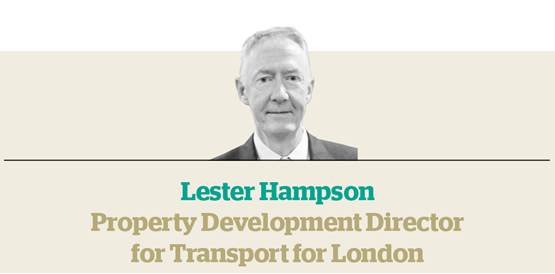
For the past 150 years, our predecessors have played a transformative role in London’s development and growth. At the core of this growth are the 270 London Underground stations connecting communities across the capital. For generations, these stations have remained as constant hubs amid fluctuations in population. Transport for London recognises the vital part stations play in their neighbourhoods.
The population of London is set to rise from 8.6 million today to ten million by 2030. TfL is responding to this significant additional demand being placed on the capital’s transport network by carrying out one of the world’s largest transport investment programmes. Alongside this, we are continually pioneering improvements in safety, customer information and accessibility to improve people’s experience at stations.
Over the next three years, TfL will become the only major European city to operate its transport system without public subsidy while keeping transport affordable for the millions who rely on us every day. So, as well as providing continually improving transport services and a more vital role for stations, TfL must itself become more efficient and independently find ways in which to generate more revenue.
In addition to a full review of our organisation to find more efficient and cost-effective ways of working, we are carrying out a plan to generate £3.4 billion by 2023, through a number of commercial development schemes including property development, advertising and retail opportunities. A key part of this is thinking strategically about how stations can evolve to best serve the ever-changing needs of local communities and customers, providing benefits beyond transport.
Housing is generally recognised as the biggest challenge that London faces. Last year, we announced that we will be developing the first phase of 75 sites over the next ten years. This will involve us developing 10,000 homes on 300 acres in highly desirable locations above, adjacent or very near to stations. Because all of our land is attached to the operational network, delivering any new development is complex and requires time and strong partnerships.
We will be working closely with the Mayor’s Office, the London Assembly, local boroughs, communities and our 13 newly appointed property development partners to deliver a mix of housing that will generate a third of our revenue target and infrastructure improvements, while supporting the Mayor’s long-term strategic target of 50% affordable housing across our sites. This has the potential to yield enormous benefits for London and more than £1.1bn in revenue for reinvestment in improving transport.
The massive volume of footfall at our stations means they are perfectly placed for retailers to provide a wide range of goods and services that customers need. Over time, we expect to see our 1,000 retail units increasingly populated by businesses that have launched on our estate. At Old Street station alone, there have been more than 200 pop-up businesses in the past two years. Beyond this, we are looking at ways to expand our commercial and retail offerings at alternative locations, from railway arches to street vending pitches.
The advertising space across the TfL network makes up 20% of the out-of-home UK advertising market and 40% of the out-of-home London advertising market. With a new advertising model set to launch later this year, we will declutter station environments, providing less but more valuable and targeted advertising. This will enhance the experience of customers and produce greater opportunities for the advertising industry, generating at least £1.2bn for TfL over the next ten years.
The end result is that TfL is carefully considering how best to improve and utilise its assets for the greatest, long-term benefit of London. Over the coming years we will deliver ambitious, long-term changes, providing increasingly accessible, better-connected and modern stations, homes, office, retail and leisure spaces as well as more contemporary, engaging advertising.
The notion that stations are community hubs will come into sharp focus as we expand their role in neighbourhoods, and as income streams to reinvest in transport.
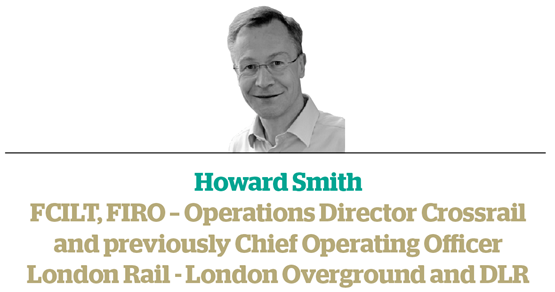
Railways and land use are inextricably linked. More than that, they drive each other - development (whether business, residential or industrial) heightened demand for railways from the Victorian pioneers onwards, and in turn the provision of excellent accessibility increased growth and land values by permitting much more dense and valuable development.
Looking to London, it is no coincidence that the low point of post-war railway ridership (and the closure of routes such as that into Broad Street) coincided with the bottoming out of London’s population after a sustained post-war fall, and prior to the resurgence to record numbers we see today.
Since the pioneering days of the Metropolitan Railway, examples of the successful linkage of railway and development have moved further afield - most obviously Japan and of course Hong Kong, where an overwhelming public transport mode share and constrained, Government-controlled, land begat the ‘transport and property’ model that underpins MTR.
In major western cities there have been great examples of transport and development in mutually beneficial sync. In the UK, the wider King’s Cross development springs to mind. Many continental city centre rebuilds have similar aspects, while even in New York developments such as Grand Central, Hudson Yards and the future (re-redevelopment) at Penn Central show what can be done in a difficult land use and regulatory environment.
Crossrail brings very significant over-site development, making a notable contribution to the costs of the project. It has also proved the catalyst for true transformation of many parts of the route. Transport for London is gearing up for a major long-term development focus, securing revenue but also increasing the use of locations with high public transport accessibility - a financial and residential win, but also a win for the environment, with reduced emissions and re-use of ‘brownfield’ sites.
At a more local level stations are regaining their place as a central focus of economic as well as transport activity. St Pancras and Birmingham New Street are obvious examples, while the restoration by London Overground of Crystal Palace’s once derelict edifice into a glorious fusion of transport, architecture and coffee is another.
So what are the key lessons in ‘getting the development right’?
Firstly, setting and holding to a medium- to long-term plan. Railways and development are two long-term businesses, both technically and economically. A significant site such as King’s Cross or Stratford inevitably entails the property cycle running its course and individuals (and other bodies) coming and going. Short-term expediency diminishes the overall benefits - financially, to users, and in reduced quality of design and place-making.
There’s also a need for ruthless clarity as to objectives, what can be achieved, and the timescales needed to get it right. Anthony’s article describes a host of schemes, but with differing scale and objectives (financial, transport, social and environmental) only rarely can we achieve all in balance. We may need, as a nation, to release brownfield public land for housing at locations far from existing stations - as with some of the long-defunct freight yards that Railfreight Distribution sold in the 1990s. But this is a very different task to reinvigorating small and medium-sized stations as community hubs, and in turn vastly different to the large, dense developments in city centres in the UK and elsewhere which feature massive multi-million sq ft development that can bring value and passengers to the railways next to (or below) them.
Finally, we need to remember that, certainly in major cities, the railway itself is the ‘golden goose’. It can exist, albeit less well, without the development, but constraining the railway, reducing reliability or increasing operating costs by making maintenance or stabling harder will lead to less valuable development - at least in the medium term. It’s the high-quality accessibility that delivers value, from Singapore and Tokyo to New York and London.
As someone whose professional involvement with rail started in the difficult days of the late 1980s, I feel we should rejoice at the opportunities for near-Victorian levels of development and growth… and make the very most of them.

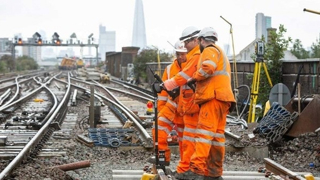
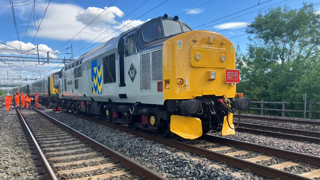

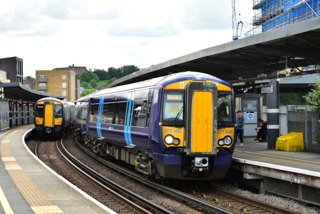
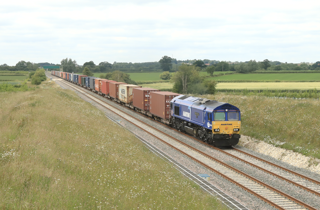










Login to comment
Comments
No comments have been made yet.